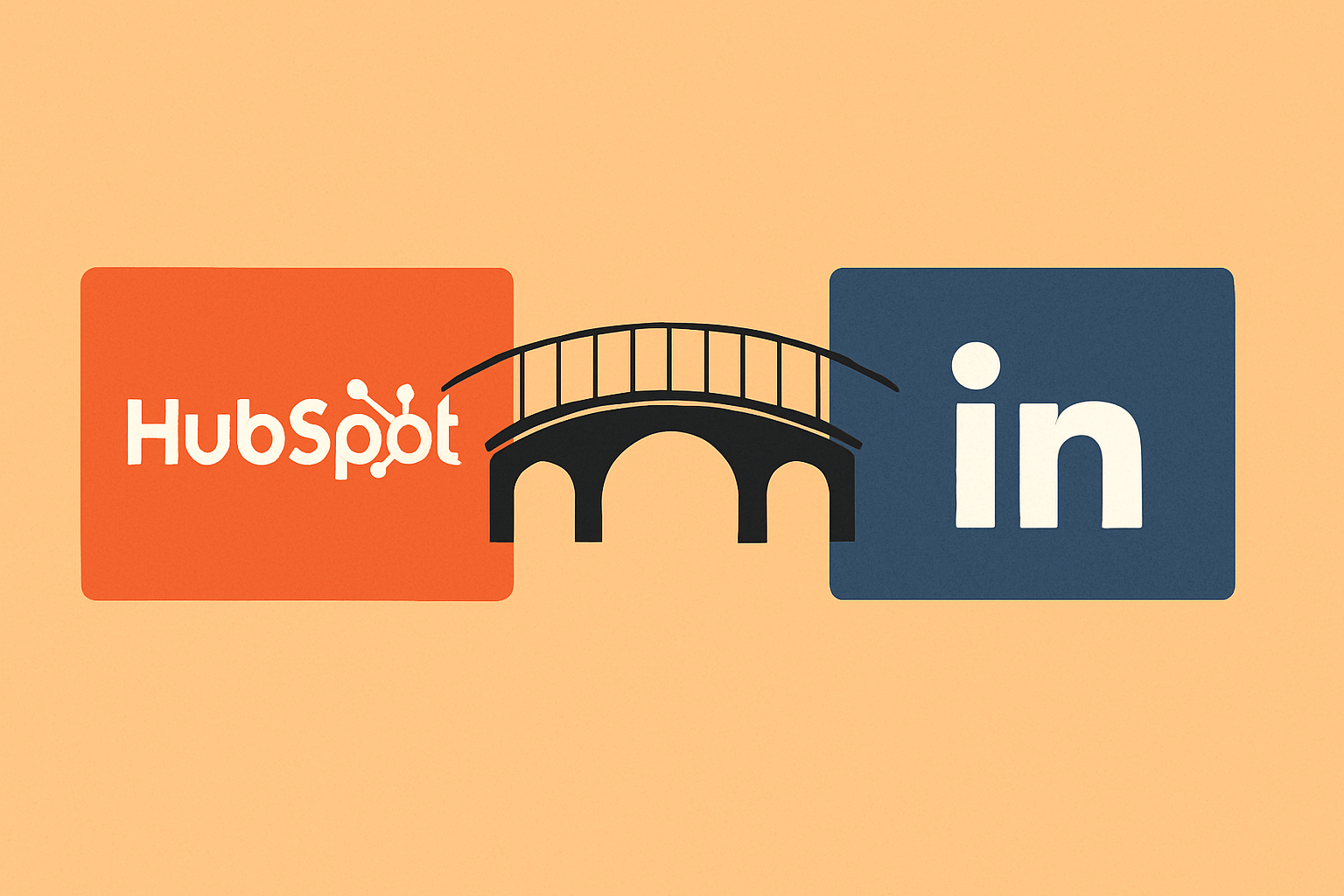Professionals who use LinkedIn Ads to generate B2B leads and HubSpot to manage their marketing and sales efforts often assume that the two platforms work in tandem. Both systems are widely adopted, technically capable, and positioned as complementary. However, in practical terms, there remains a structural deficiency in how data flows between them, particularly in relation to campaign measurement and optimization.
HubSpot’s native integration with LinkedIn handles only the most basic requirements. It collects leads from LinkedIn Lead Gen Forms and creates new contact records in HubSpot. It also allows marketers to sync HubSpot contact lists to LinkedIn as matched audiences. These functions are adequate for capturing initial interest and performing rudimentary retargeting. They do not, however, address the more important question: what happens after the lead is captured?
The limitation is straightforward. HubSpot knows when a contact becomes qualified, when a deal is created, and when revenue is recognized. LinkedIn does not. As a result, LinkedIn continues to optimize ad delivery based on superficial metrics such as form completions or click-through rates. In environments with longer sales cycles, such as B2B, this lack of visibility leads to misaligned targeting, imprecise bidding, and an inability to distinguish productive segments from poor performers.
To address this, a middleware solution is required. Tools such as Zapier serve as the intermediary, enabling structured communication between HubSpot and LinkedIn. With the appropriate configuration, Zapier can send CRM-defined conversion events such as “Marketing Qualified Lead,” “Opportunity Created,” or “Deal Won” directly into LinkedIn’s Conversions API. These signals are then used by LinkedIn to inform campaign optimization logic.
The benefits of this arrangement are practical rather than theoretical. Marketers can calibrate their campaigns based on actual revenue outcomes rather than proxies. Paid media reports can reflect CRM-defined performance benchmarks, not isolated digital interactions. Targeting strategies can shift from generic demographics to segments that are demonstrably more likely to generate pipeline. Moreover, by automating this data exchange, teams reduce the administrative overhead associated with reporting and analysis.
The value of such integration becomes increasingly clear as organizations scale. Without a feedback mechanism, ad platforms remain isolated from the downstream effects of their activity. Decisions are made based on incomplete information, and budget is often allocated without adequate supporting evidence. In contrast, when the data loop is closed, marketing and sales activities become more coherent, more accountable, and ultimately more effective.
While HubSpot and LinkedIn each serve their intended purpose, the absence of native bidirectional data exchange creates an avoidable blind spot. Supplementing the native connection with a well-structured automation tool eliminates this gap. It provides the visibility required for intelligent decision-making and allows both platforms to operate with the benefit of complete context.
SMBinfo’s Perspective: For marketing teams that are serious about understanding and improving their paid acquisition efforts, this connection is not a technical convenience. It is a structural necessity.

